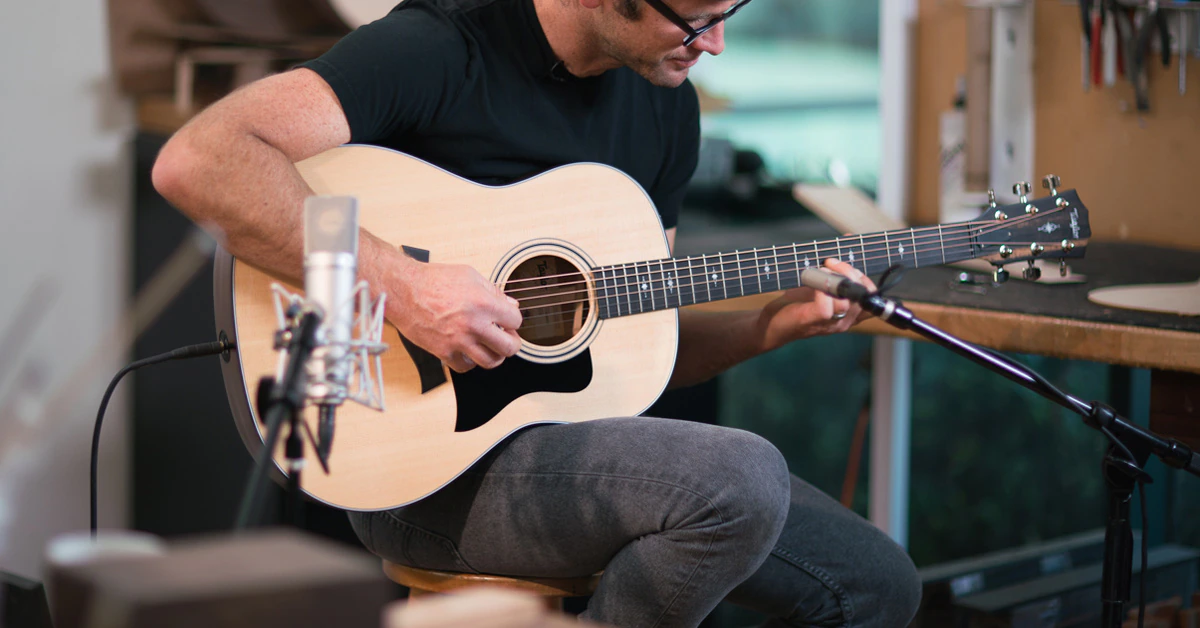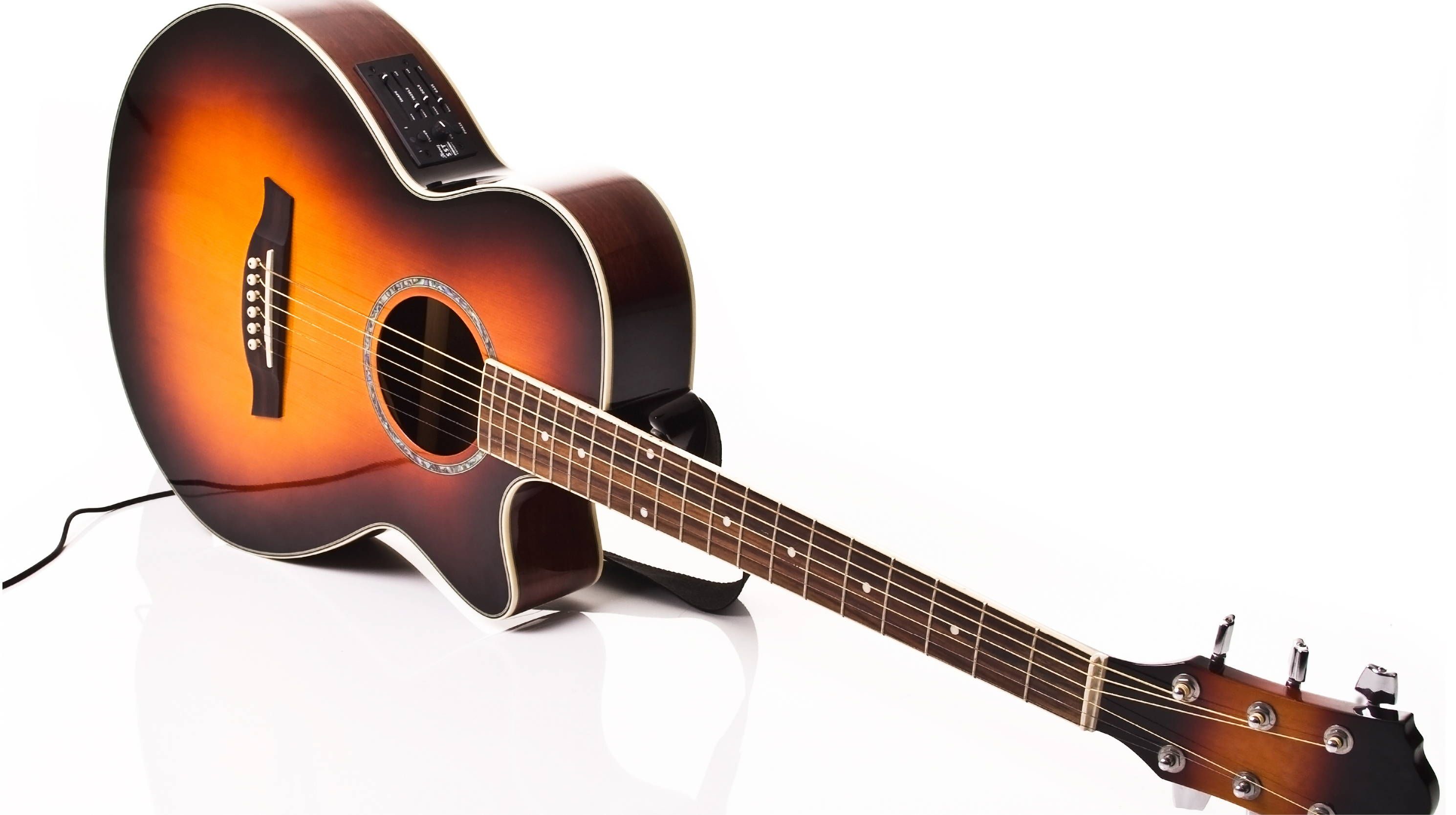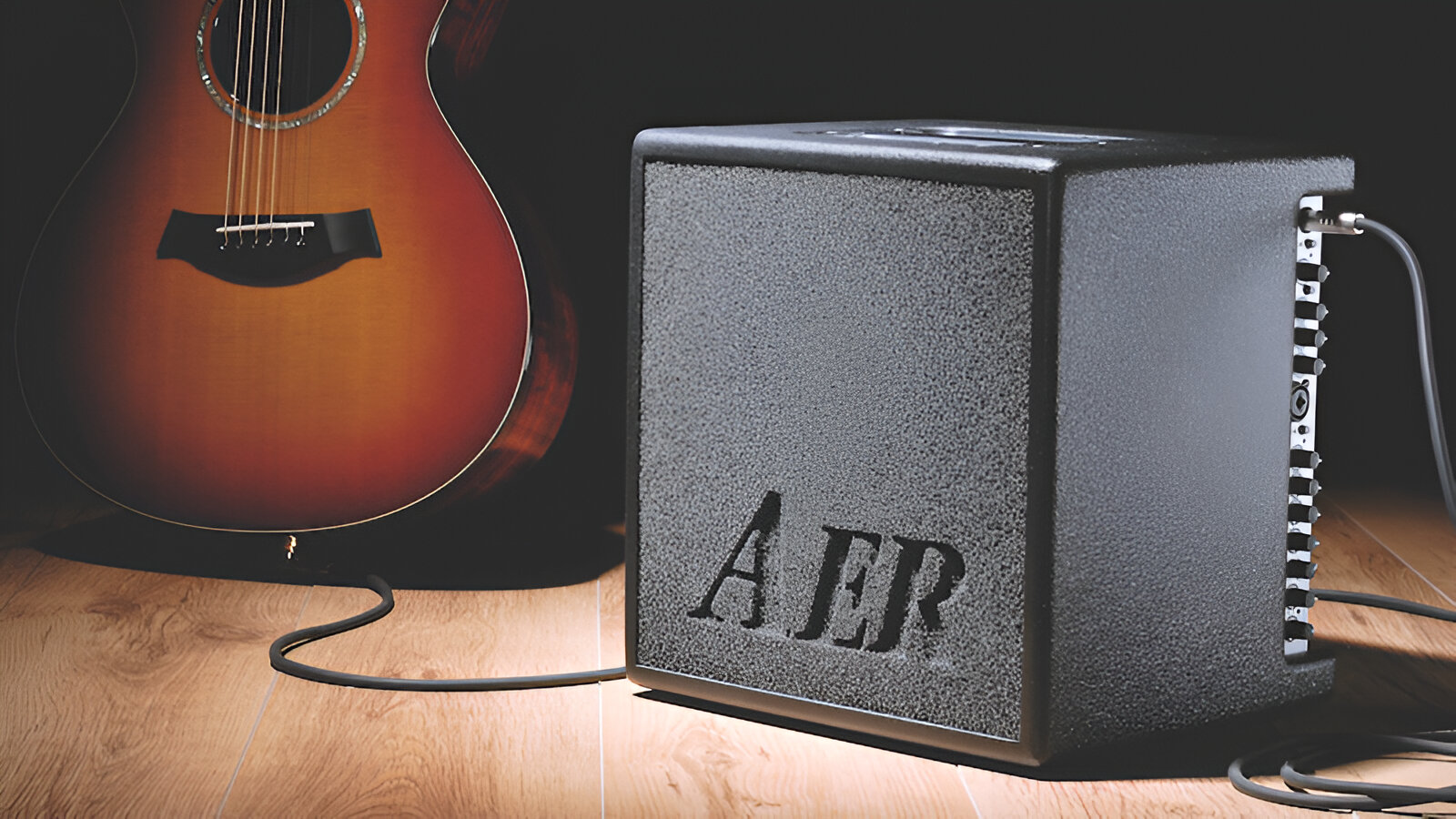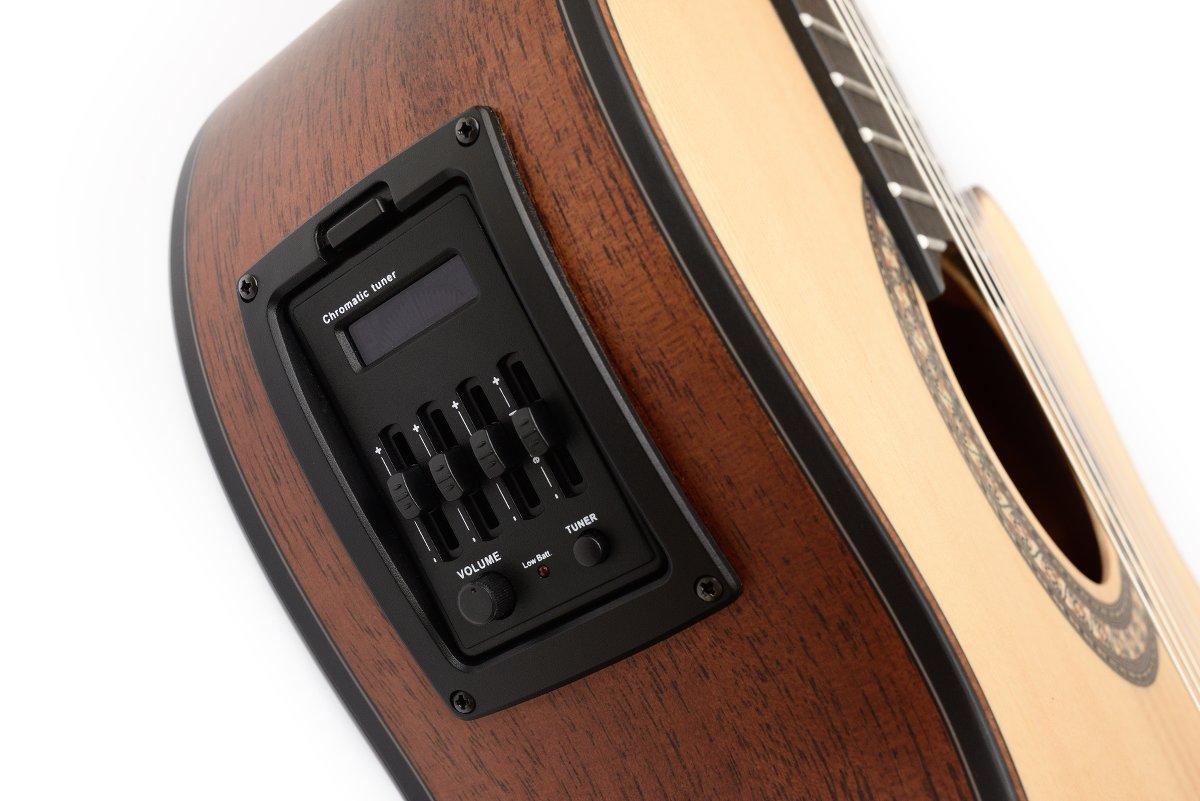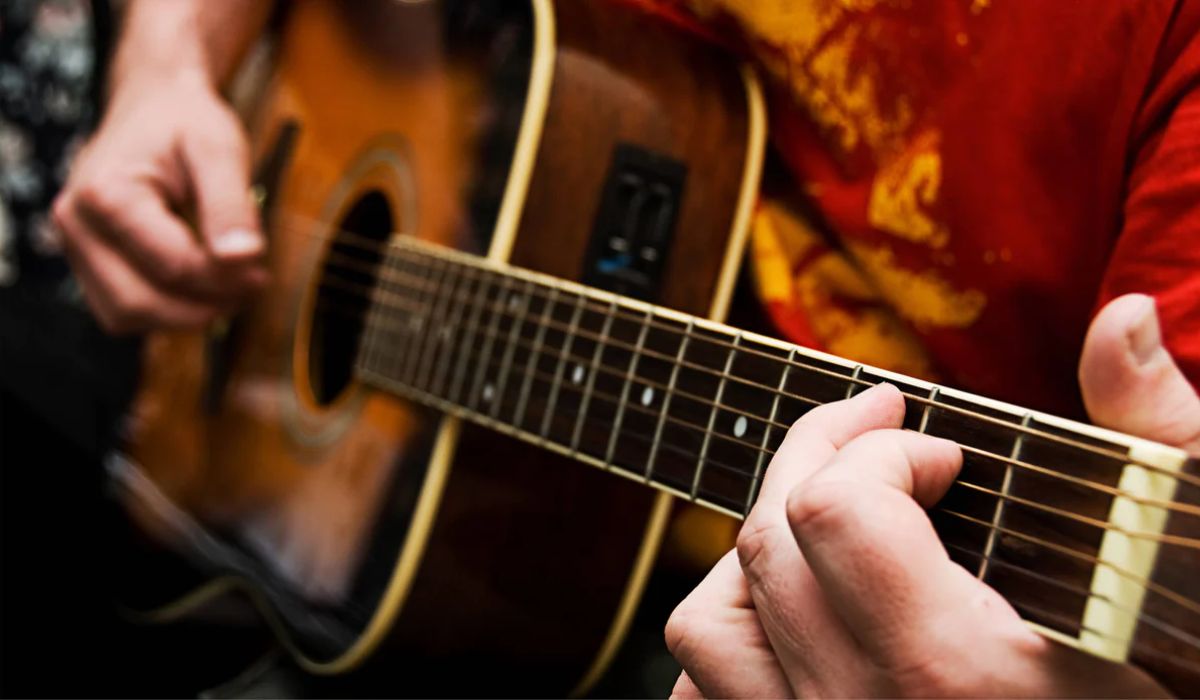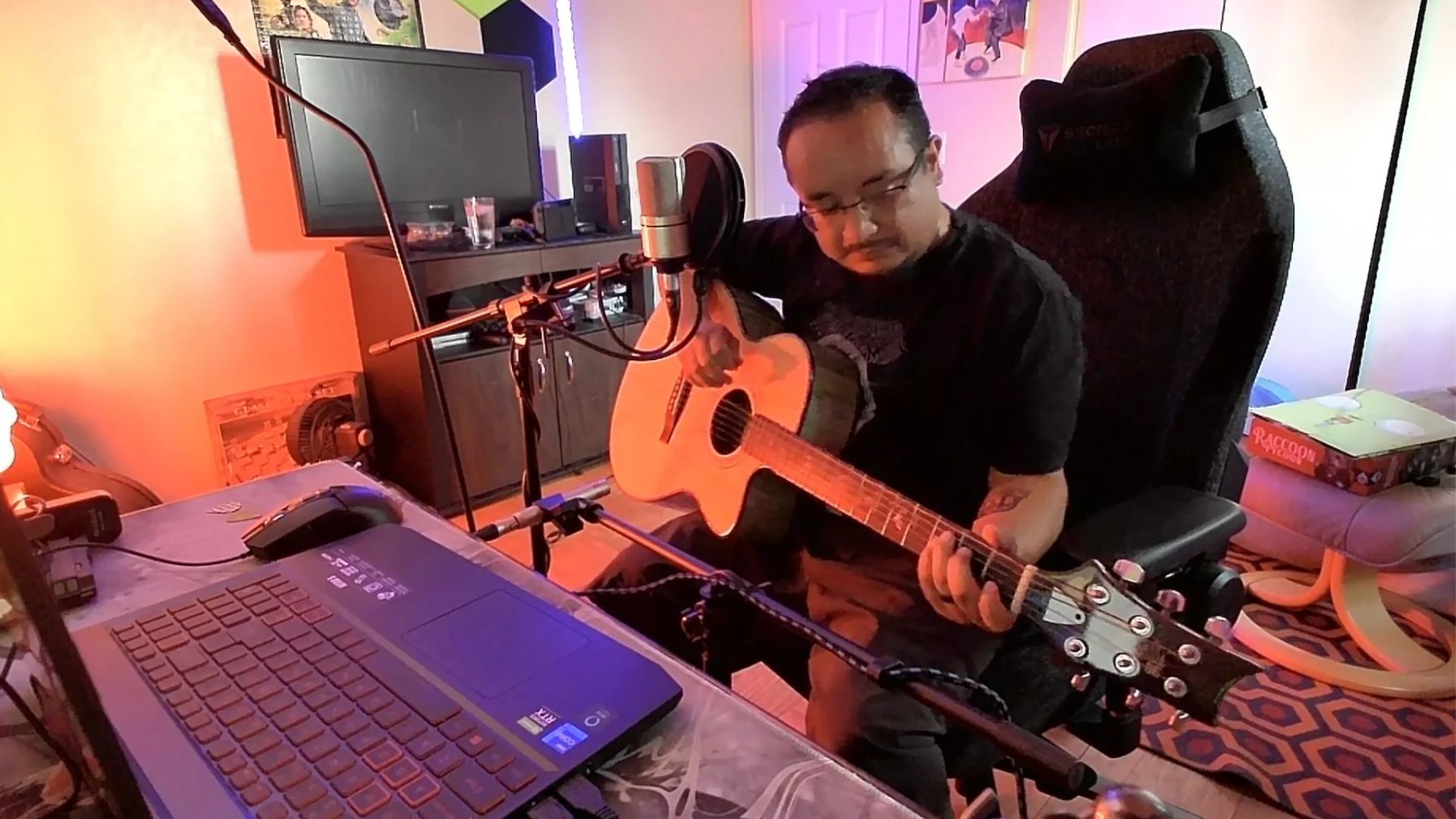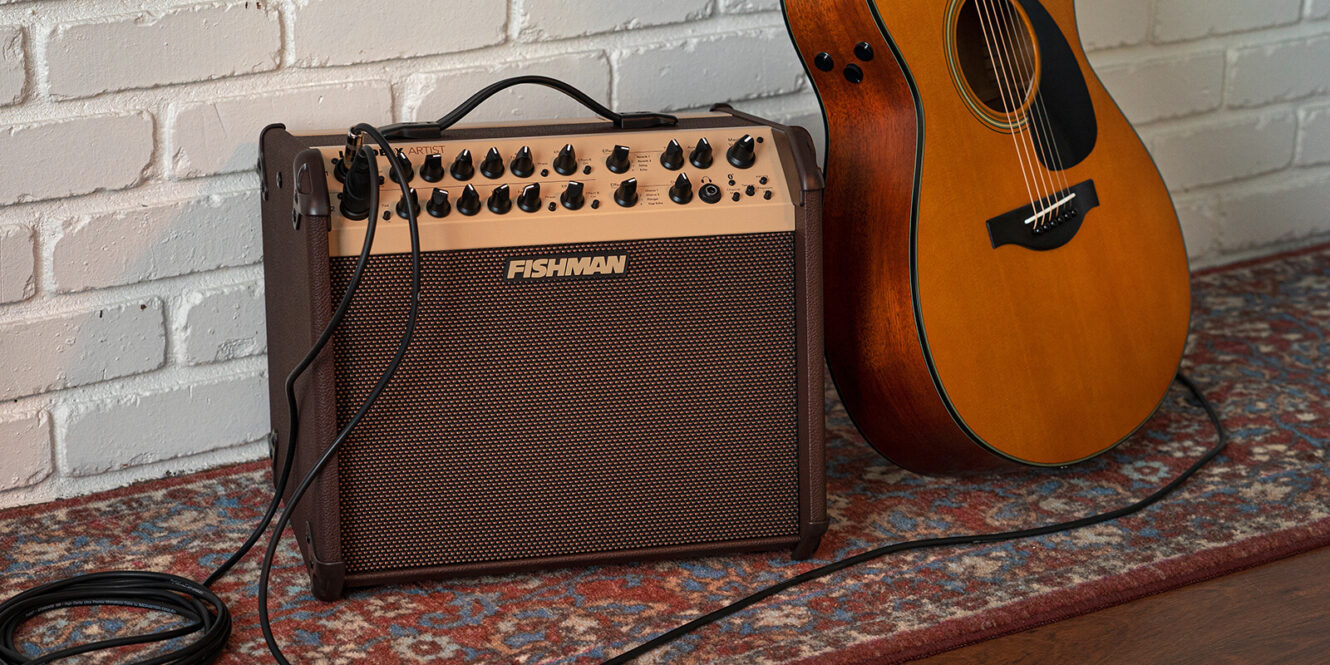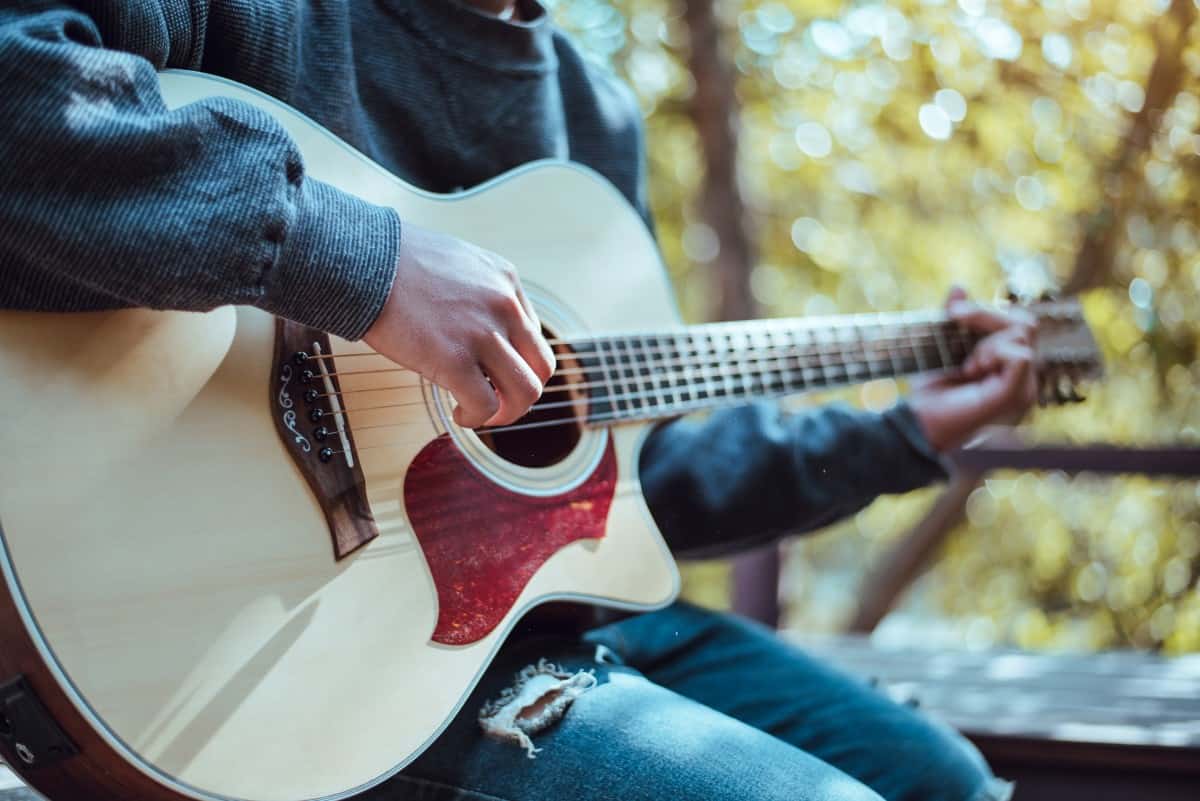Introduction
Are you a musician looking to capture the rich, resonant tones of your acoustic electric guitar in a recording? Whether you're a seasoned performer or just starting out, understanding the nuances of recording this versatile instrument can make all the difference in achieving a professional and captivating sound. In this comprehensive guide, we'll explore the essential techniques and equipment needed to effectively record acoustic electric guitar, empowering you to unleash your creativity and share your music with the world.
Capturing the intricate details and nuances of an acoustic electric guitar requires a thoughtful and meticulous approach to recording. From selecting the right equipment to mastering mic placement techniques, each step plays a crucial role in achieving a pristine and authentic sound. Whether you're aiming for a warm, intimate ambiance or a crisp, dynamic resonance, the recording process is an art form that allows you to shape and showcase the unique character of your instrument.
As we delve into the intricacies of recording acoustic electric guitar, you'll gain valuable insights into the technical and creative aspects of the process. By mastering the techniques outlined in this guide, you'll be well-equipped to produce high-quality recordings that truly capture the essence of your musical expression. Whether you're recording for personal enjoyment, sharing your music online, or producing professional tracks, the knowledge and skills you'll gain from this guide will empower you to elevate your recordings to new heights.
Throughout this guide, we'll cover everything from selecting the right equipment and setting up your recording space to exploring mic placement techniques and direct input recording. Additionally, we'll provide expert tips for achieving the best sound quality and overcoming common challenges that arise during the recording process. By the end of this journey, you'll be equipped with the knowledge and confidence to embark on your recording endeavors with clarity and purpose. So, let's embark on this exciting exploration of recording acoustic electric guitar and unlock the potential to create captivating and memorable musical recordings.
Choosing the Right Equipment
When it comes to recording acoustic electric guitar, selecting the right equipment is pivotal in capturing the true essence of your instrument. The following key components are essential for achieving high-quality recordings:
- Acoustic Electric Guitar: The foundation of a great recording begins with a high-quality instrument. Ensure that your guitar is properly set up, intonated, and equipped with fresh strings to achieve optimal tone and resonance.
- Audio Interface: An audio interface serves as the bridge between your guitar and the recording software on your computer. Look for an interface with high-quality preamps and converters to accurately capture the nuances of your guitar's sound.
- Microphones: For acoustic electric guitar recording, a condenser microphone is commonly used due to its ability to capture detailed, natural sound. Additionally, having a dynamic microphone for close-miking the guitar's amplifier can add depth and versatility to your recordings.
- Headphones: A pair of studio-quality headphones is essential for monitoring your recordings with precision. Look for headphones that provide accurate sound reproduction to ensure that you can make informed decisions during the recording process.
- Studio Monitors: While headphones are crucial for detailed monitoring, studio monitors offer a different perspective and are essential for evaluating the overall sound of your recordings in a room environment.
- Recording Software: Select a digital audio workstation (DAW) that aligns with your recording needs and preferences. Whether you prefer a user-friendly interface or advanced editing capabilities, choosing the right software is crucial for a seamless recording experience.
By carefully selecting and investing in high-quality equipment, you can lay a solid foundation for capturing the unique character and tonal nuances of your acoustic electric guitar. Each component plays a vital role in the recording chain, contributing to the overall fidelity and authenticity of your recordings.
As we move forward, we'll explore the intricate process of setting up your recording space to create an environment that enhances the sonic qualities of your acoustic electric guitar. With the right equipment in place, you'll be well-prepared to embark on a rewarding recording journey that showcases the true essence of your musical expression.
Setting Up Your Recording Space
Creating an optimal recording environment is essential for capturing the rich and authentic sound of your acoustic electric guitar. By carefully configuring your recording space, you can minimize unwanted noise, enhance acoustics, and create an atmosphere that inspires creativity. Here are key considerations for setting up your recording space:
- Room Selection: Choose a room with favorable acoustics, minimal external noise, and sufficient space to accommodate your recording equipment. Ideally, a room with minimal reverb and sound reflections will provide a clean sonic canvas for capturing your guitar's sound.
- Acoustic Treatment: Incorporating acoustic panels, bass traps, and diffusers can help control the sound reflections within the room, resulting in a more balanced and controlled acoustic environment. Strategic placement of acoustic treatments can mitigate unwanted resonances and enhance the clarity of your recordings.
- Isolation: If possible, isolate the recording space from external noise sources such as HVAC systems, street traffic, and other household activities. This isolation can be achieved through soundproofing materials, heavy curtains, or recording in a room with minimal ambient noise.
- Instrument Positioning: Experiment with the placement of your guitar within the room to find the optimal position that complements its tonal characteristics. Additionally, consider the orientation of your guitar in relation to the microphones to achieve the desired sound capture.
- Comfort and Inspiration: Create a comfortable and inspiring space that allows you to focus on your musical performance. Consider the lighting, seating, and overall ambiance of the room to cultivate a conducive environment for creativity and expression.
By thoughtfully addressing these aspects of your recording space, you can create an environment that fosters sonic clarity, creativity, and a seamless recording experience. The careful attention to detail in setting up your recording space will significantly contribute to the overall quality and authenticity of your acoustic electric guitar recordings.
As we progress, we will explore mic placement techniques and direct input recording methods that will further enhance your ability to capture the nuances and subtleties of your instrument. With a well-prepared recording space, you are poised to embark on a fulfilling recording journey that celebrates the true essence of your music.
Mic Placement Techniques
Mastering mic placement techniques is a critical aspect of recording acoustic electric guitar, as it directly influences the tonal characteristics and sonic nuances captured during the recording process. The following mic placement techniques offer valuable insights into optimizing the sound capture of your instrument:
- Close-Miking: Placing a microphone in close proximity to the guitar’s soundhole or fretboard can emphasize the instrument’s natural resonance and percussive qualities. This technique is ideal for capturing intimate and detailed performances, allowing for precise control over the instrument’s tonal balance.
- Mid-Side (M/S) Stereo Recording: Utilizing a mid-side microphone setup can create a spacious and immersive stereo image, enhancing the depth and dimension of the recorded sound. By positioning a cardioid microphone close to the soundhole (mid) and a figure-8 microphone perpendicular to the cardioid (side), you can achieve a versatile stereo recording with adjustable width and ambience.
- Room Miking: Placing a microphone at a distance from the guitar to capture the ambient sound of the room can add natural reverberation and depth to the recording. This technique is particularly effective in capturing the instrument’s resonance within the acoustic space, resulting in a more expansive and immersive sonic quality.
- Multi-Miking: Experimenting with multiple microphones positioned at different locations around the guitar can provide a diverse range of tonal options and sonic textures. By blending the signals from multiple microphones, you can sculpt a rich and dynamic sound that complements the unique characteristics of your guitar.
- Off-Axis Positioning: Adjusting the angle and orientation of the microphone in relation to the guitar can yield distinct tonal variations. Off-axis positioning can attenuate certain frequencies, minimize ambient noise, and sculpt the overall tonal balance, offering a nuanced approach to capturing the instrument’s sound.
Each mic placement technique offers a unique perspective on capturing the sonic intricacies of your acoustic electric guitar, providing you with a versatile toolkit to shape the character and ambience of your recordings. By experimenting with these techniques and considering the sonic qualities you wish to emphasize, you can elevate your recordings to new levels of depth and expression.
As we delve into direct input recording and expert tips for achieving the best sound, keep in mind that mastering mic placement techniques empowers you to craft recordings that faithfully represent the soulful essence of your acoustic electric guitar.
Direct Input Recording
Direct input recording offers a versatile and convenient approach to capturing the pristine sound of your acoustic electric guitar directly into your audio interface or recording device. This method bypasses the need for microphones and allows for a clean and direct signal capture, making it an ideal option for achieving a focused and controlled sound. Here are key considerations and techniques for successful direct input recording:
- Utilizing a High-Quality DI Box: A direct injection (DI) box serves as a crucial interface between your guitar and the audio interface, ensuring proper impedance matching and signal optimization. Look for a DI box with transparent and accurate signal transmission capabilities to preserve the natural tonal characteristics of your guitar.
- Adjusting Input Levels: When connecting your acoustic electric guitar to the DI box, carefully adjust the input levels to avoid clipping and distortion. Monitoring the input levels on your audio interface or recording software allows you to maintain a clean and balanced signal without compromising the integrity of the recording.
- Utilizing Built-In Preamps: Some audio interfaces feature built-in preamps specifically designed for recording instruments, offering a streamlined direct input recording process. These preamps can provide the necessary gain and tonal shaping to optimize the sound of your guitar directly into the recording system.
- Exploring EQ and Compression: Within your recording software or audio interface, experiment with equalization (EQ) and compression to refine the tonal characteristics and dynamic range of the recorded signal. Careful adjustments to EQ settings and compression parameters can enhance the clarity and presence of your guitar’s sound.
- Layering and Blending: Direct input recordings can be effectively layered and blended with other sonic elements, such as room mics or ambient effects, to create a rich and textured sound. By combining direct input recordings with other recording techniques, you can expand the sonic palette of your acoustic electric guitar recordings.
Direct input recording offers a versatile and reliable method for capturing the pure essence of your acoustic electric guitar, providing a clean and uncolored representation of your instrument’s sound. Whether you seek a focused and articulate tone for intricate performances or a pristine signal for further processing and production, mastering direct input recording techniques can significantly enhance your recording capabilities.
As we proceed to explore expert tips for achieving the best sound and overcoming common challenges in recording acoustic electric guitar, remember that direct input recording serves as a valuable tool in your recording arsenal, offering flexibility and precision in capturing the unique voice of your instrument.
Tips for Getting the Best Sound
When it comes to recording acoustic electric guitar, implementing the following tips can elevate the quality and authenticity of your recordings, allowing you to capture the full expressive range of your instrument:
- Optimize String Selection and Setup: Fresh strings and proper setup are essential for achieving optimal tone and playability. Ensure that your guitar is equipped with high-quality strings that complement the desired tonal characteristics of your recordings.
- Experiment with Playing Techniques: Explore a variety of playing techniques, such as fingerpicking, strumming, and percussive effects, to infuse your recordings with dynamic textures and expressive nuances. Each technique offers a unique sonic footprint that contributes to the overall richness of your recordings.
- Monitor Room Acoustics: Familiarize yourself with the acoustics of your recording space and how they influence the sound of your guitar. By understanding the room’s sonic properties, you can make informed decisions regarding mic placement and recording settings to optimize the acoustic environment.
- Focus on Performance Dynamics: Pay attention to the dynamic range of your performances, emphasizing subtle nuances and expressive variations in your playing. Dynamic performances can breathe life into your recordings, creating a captivating and emotive sonic narrative.
- Embrace Post-Recording Processing: Utilize post-processing tools, such as EQ, reverb, and compression, to refine the tonal characteristics and spatial depth of your recordings. Thoughtful application of these tools can enhance the overall sonic impact of your guitar tracks.
- Seek Feedback and Iteration: Solicit feedback from trusted peers or mentors to gain valuable perspectives on your recordings. Embrace an iterative approach to recording, allowing for refinements and adjustments based on constructive feedback.
By integrating these tips into your recording process, you can cultivate a holistic approach to capturing the best sound from your acoustic electric guitar. Each tip offers valuable insights into the technical and artistic aspects of recording, empowering you to craft recordings that resonate with depth, emotion, and sonic clarity.
As we navigate the intricacies of recording acoustic electric guitar, keep these tips in mind as foundational principles that guide your creative and technical decisions. By leveraging these insights, you can embark on a fulfilling recording journey that celebrates the unique voice of your instrument.
Conclusion
Embarking on the journey of recording acoustic electric guitar unveils a world of creative possibilities and technical intricacies, each contributing to the art of capturing the instrument’s rich and resonant sound. From meticulously selecting the right equipment to mastering mic placement techniques and embracing direct input recording, the process of recording acoustic electric guitar is a harmonious blend of technical expertise and artistic expression.
As you navigate the nuances of recording, remember that the heart of the endeavor lies in the celebration of musical expression and the authentic representation of your instrument’s voice. Each step, from setting up your recording space to incorporating expert tips for achieving the best sound, serves as a testament to your dedication to capturing the essence of your music with clarity and finesse.
By embracing the tips, techniques, and insights presented in this comprehensive guide, you are equipped to embark on a recording journey that transcends technical proficiency and delves into the realm of artistic storytelling. Your recordings serve as a testament to your musical journey, encapsulating the nuances, emotions, and intricacies of your acoustic electric guitar performances.
As you apply the knowledge gained from this guide, remember that the recording process is a dynamic and iterative pursuit, inviting you to explore, experiment, and refine your approach with each new recording endeavor. Whether you record for personal enjoyment, share your music with a global audience, or pursue professional aspirations, the journey of recording acoustic electric guitar is a testament to your commitment to musical excellence and creative expression.
With a blend of technical acumen, artistic intuition, and a passion for sonic storytelling, you are poised to embark on a recording journey that transcends boundaries and resonates with authenticity. Your recordings stand as a testament to the enduring allure and captivating beauty of the acoustic electric guitar, inviting listeners into a world of emotive resonance and timeless musical narratives.







